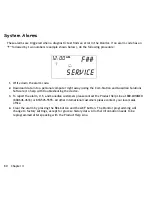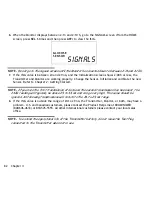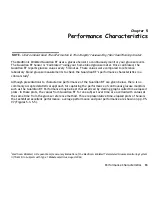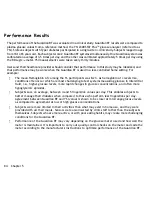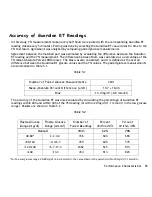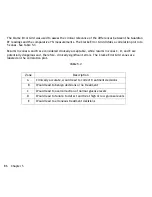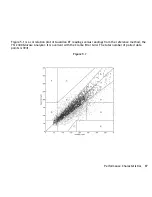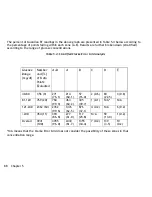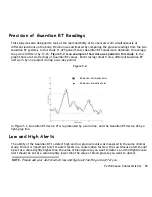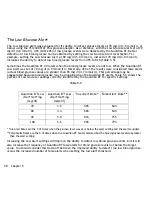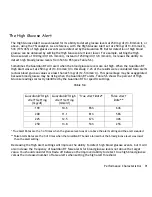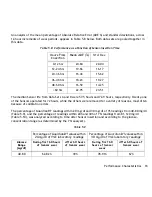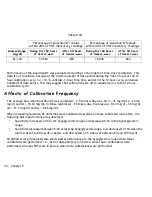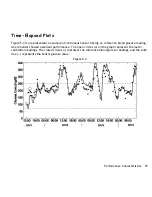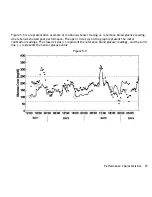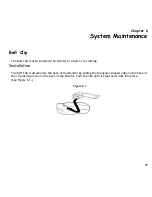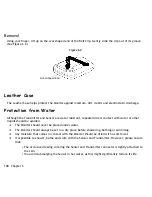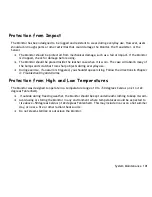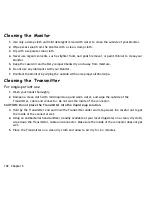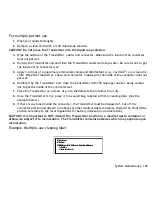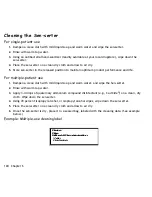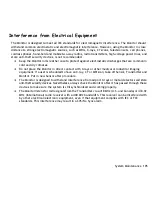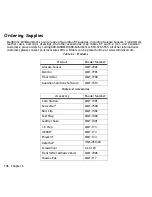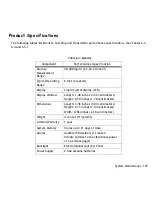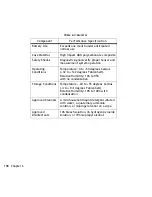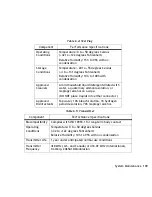
94
Chapter 5
Table 5.10
Performance of the Guardian RT was evaluated according to the length of time since calibration. This
data is not conclusive because of the limited number of data points during the final 3 hours of the 12-
hour calibration cycle, i.e., 10. In contrast, 3-hour time bins, earlier in the 12-hour cycle, contained
hundreds of data points. This may suggest that calibrations are often required prior to the 12-hour
calibration cycle.
Affects of Calibration Frequency
The average bias when Guardian RT was calibrated ~ 3.5 times a day was -20.5 + 41 mg/dl (LL: -22.40
mg/dl and UL: -18.63 mg/dl). In those calibrated ~ 5 times a day, the bias was -10.2 mg/dl + 36 mg/dl
(LL: -11.74 mg/dl and UL: -8.66 mg/dl).
When comparing Guardian RT units that were calibrated less often to those calibrated more often, the
following alarm performance was observed:
‡
Specificity increased 2-4% in the hypoglycemic range and decreased 0-2% in the hyperglycemic
range
‡
Sensitivity increased between 5-9% across the hyperglycemic range, and decreased 7-16% when the
alarm was set to 80 mg/dl or below, and decreased 3-7% when set between 85 and 100 mg/dl
Stratified error grid analysis also shows better performance in the hypoglycemic range when fewer
calibrations are performed, i.e., 62% of data points are in Zone A when fewer calibrations were
performed, whereas 58% were in Zone A when more calibrations were performed.
Percentage of Guardian RT values
within 20% of YSI laboratory readings
Percentage of Guardian RT values
within 30% of YSI laboratory readings
Glucose Range
(mg/dl)
During first 60 hours
of Sensor wear
After 60 hours
of Sensor wear
During first 60 hours
of Sensor wear
After 60 hours
of Sensor wear
81-120
57-66%
48%
72-84%
66%
Summary of Contents for Guardian RT MMT-7900
Page 1: ...Guardian RT Continuous Glucose Monitoring System REF MMT 7900 User Guide ...
Page 58: ...52 Chapter 2 ...
Page 104: ...98 Chapter 5 ...
Page 126: ...120 ...
Page 128: ...122 ...

